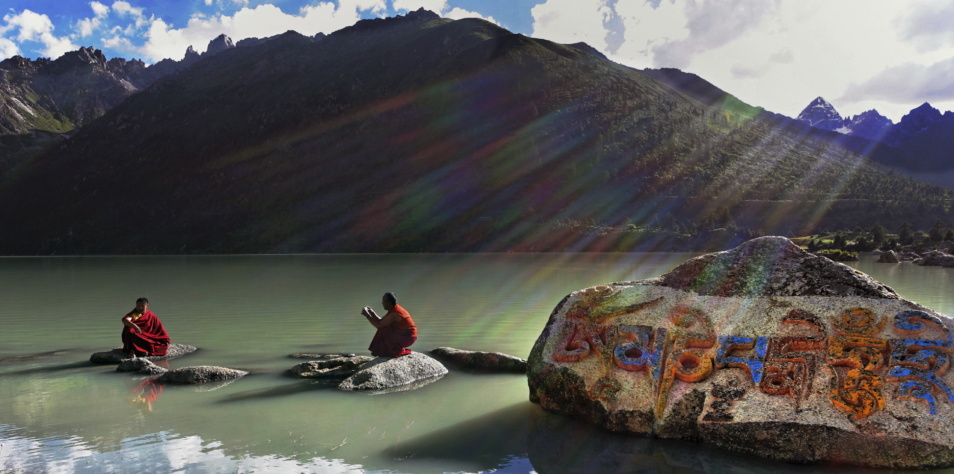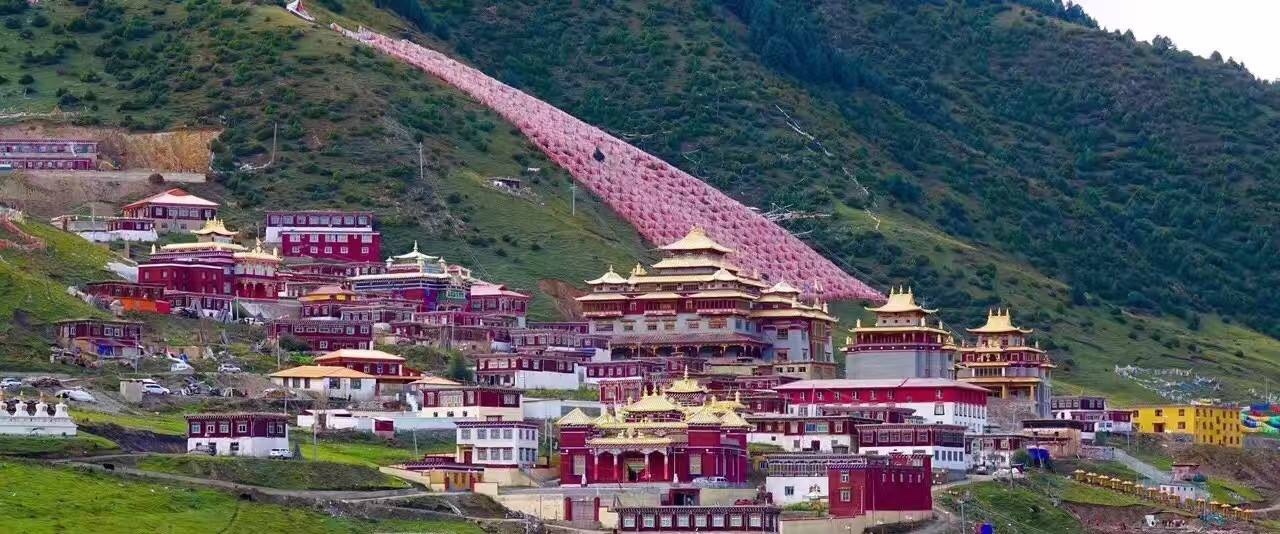#17 – Special Edition: Consecration in Shechen Tibet
Quick links in this edition:
The Consecration in Tibet
Other Links
The Consecration in Tibet
Message from the editor:
Although news of the consecration of the newly built temple at the historic Shechen monastery in Tibet has already been shared on Shechen’s social media pages, we felt that this was such a significant event that it deserves more in-depth coverage such as we have endeavored to outline here. We do hope you enjoy this special issue of the Shechen Newsletter!
The original Shechen Temple in Dege, Tibet was finally consecrated on July 15. This was an extraordinary event for Shechen and congratulations are extended to all involved. The construction of the temple was a huge project, taking seven years to complete, as the old structure was no longer safe and had to be demolished.
Thousands of people journeyed to this beautiful remote area ringed by majestic mountains to celebrate this joyful occasion and attend the consecration ceremonies. At least 7000 monks and nuns came from neighboring Dzogchen Monastery and from the major monasteries of Tibet as far away as Amdo (including from the 70 branch monasteries of Shechen). Officials from Dege County and representatives from the Department of Religion and other government agencies were present.
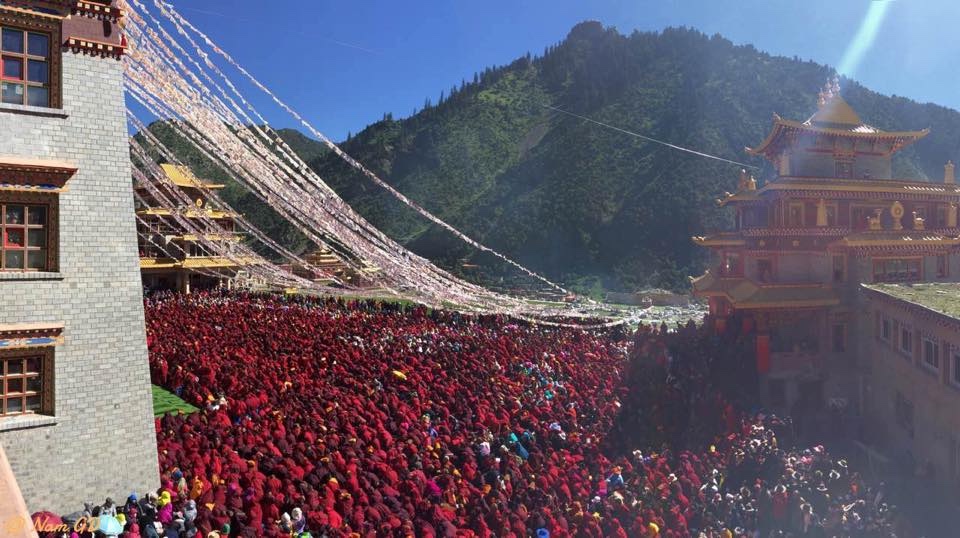 Over 2000 Chinese lay devotees and a group of western students also joined the festivities. Unfortunately, because of last minute problems with their documents, Shechen Rabjam Rinpoche and Dilgo Khyentse Yangsi Rinpoche were unable to attend. Shechen Gyaltsap Rinpoche led the ceremonies, which included sacred dances.
Over 2000 Chinese lay devotees and a group of western students also joined the festivities. Unfortunately, because of last minute problems with their documents, Shechen Rabjam Rinpoche and Dilgo Khyentse Yangsi Rinpoche were unable to attend. Shechen Gyaltsap Rinpoche led the ceremonies, which included sacred dances.
The original Shechen Monastery was established in 1695 by the first Shechen Rabjam, Tenpe Gyaltsen, who had been sent to Kham by the 5th Dalai Lama for this purpose. In 1734, the second Shechen Rabjam built the main temple. Shechen rapidly became one of the six principal monasteries of the Nyingma, or “ancient” tradition and the center of a network of one hundred and sixty satellite monasteries situated throughout the Himalayan region.
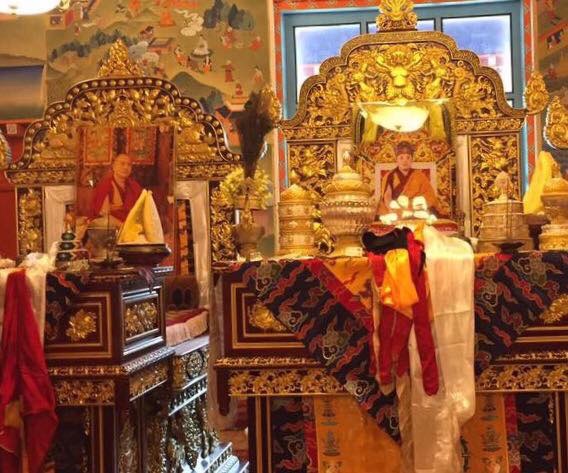 Shechen was renowned for the pure spirituality of its teachers and hermits, for the quality of the teaching at its philosophical college (shedra), and for the authenticity of its sacred arts (ritual, chants, music and dance). Many great masters came from Shechen Monastery including Shechen Gyalstab, Shechen Kongtrul, Khenpo Gangsar, and the sage Mipham Rinpoche. Dilgo Khyentse Rinpoche, Chogyam Trungpa, and many other important 20th century teachers travelled to receive teachings at the monastery.
Shechen was renowned for the pure spirituality of its teachers and hermits, for the quality of the teaching at its philosophical college (shedra), and for the authenticity of its sacred arts (ritual, chants, music and dance). Many great masters came from Shechen Monastery including Shechen Gyalstab, Shechen Kongtrul, Khenpo Gangsar, and the sage Mipham Rinpoche. Dilgo Khyentse Rinpoche, Chogyam Trungpa, and many other important 20th century teachers travelled to receive teachings at the monastery.
During the Chinese communist invasion of Tibet in 1957, the monastery and its 110 branch monasteries were razed to the ground. In 1985 when Dilgo Khyentse Rinpoche returned to Tibet after more than twenty-five years in exile, he found nothing but ruins. Thanks to his inspiration, and to the unchangeable strength of mind of the Tibetan people, over the years the monastery complex was rebuilt. It now houses 900 monks including the monks in the shedra, and retreat facilities.
 In 2009 Shechen Rabjam Rinpoche initiated the project to rebuild the main temple and the construction began in 2011. The building is made of double-strength concrete and designed to withstand earthquakes up to 8 on the Richter scale. The foundation is 12 meters deep, the walls are insulated and the windows are double-glazed. The building can serve as an emergency shelter for the local population in case of a disaster.
In 2009 Shechen Rabjam Rinpoche initiated the project to rebuild the main temple and the construction began in 2011. The building is made of double-strength concrete and designed to withstand earthquakes up to 8 on the Richter scale. The foundation is 12 meters deep, the walls are insulated and the windows are double-glazed. The building can serve as an emergency shelter for the local population in case of a disaster.
It is an amazingly complex and beautiful structure with seven floors and many halls, the largest of which can accommodate 3,000 monks. Intricate woodwork, murals, and statues grace this magnificent hall. The temple complex includes three zimchung (rooms) to house relics and personal items of Dilgo Khyentse Rinpoche, Shechen Gyaltsab Rinpoche, and the previous Shechen Rabjam Rinpoche, that will be objects of pilgrimage.
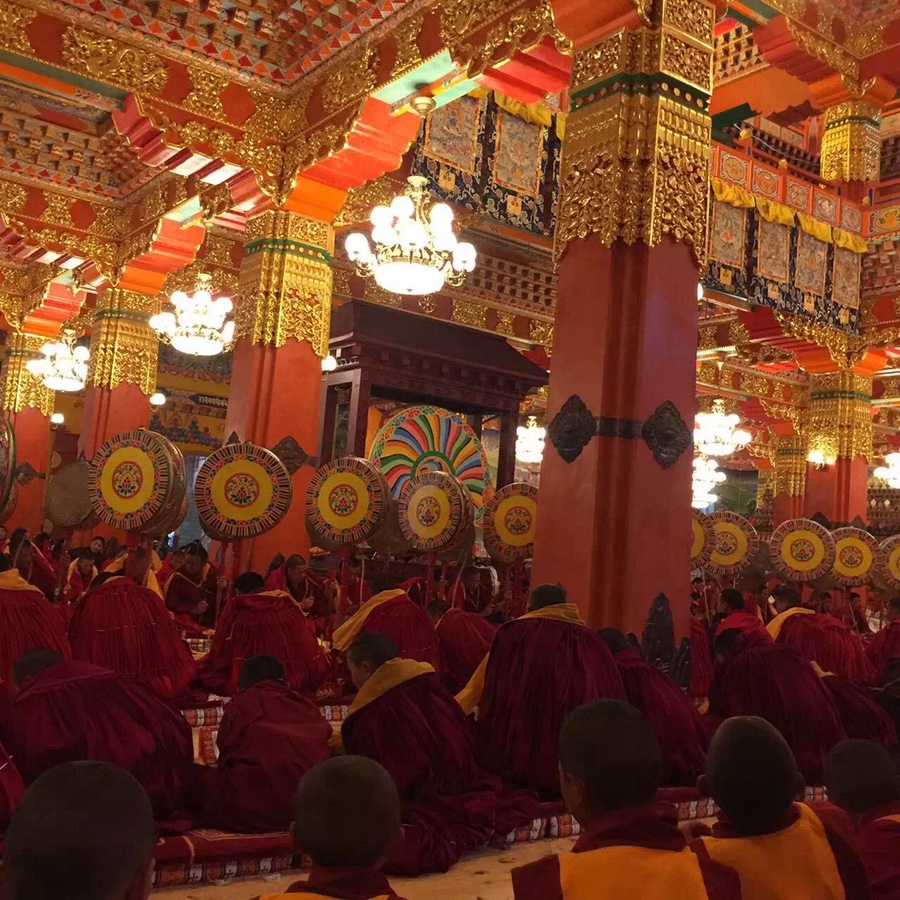 Also within the main building are thirteen smaller temples: the temple of eight manifestations of Padmasambhava, the main assembly hall with the buddhas of the three-times and mural paintings of the life of Buddha, a Vajrasattva temple with 1000 Vajrasattvas, a Twenty-one Tara temple, a Protector’s temple, Jokhang temple, a temple of lineage masters, the Avalokiteshvara temple, a Memorial Temple of Khenlop Chosum (Abbot Shantarakshita, the Master Padmasambhava, and the Dharma King Trisong Detsun) with murals of the life of Padmasambhava, a Manjushri Temple dedicated to Lama Mipham, and a Sayi Nyingpo (bodhisattva Kshitigarbha) Temple. There are also two smaller side temples: a Gesar temple and a Buddha Shakyamuni temple.
Also within the main building are thirteen smaller temples: the temple of eight manifestations of Padmasambhava, the main assembly hall with the buddhas of the three-times and mural paintings of the life of Buddha, a Vajrasattva temple with 1000 Vajrasattvas, a Twenty-one Tara temple, a Protector’s temple, Jokhang temple, a temple of lineage masters, the Avalokiteshvara temple, a Memorial Temple of Khenlop Chosum (Abbot Shantarakshita, the Master Padmasambhava, and the Dharma King Trisong Detsun) with murals of the life of Padmasambhava, a Manjushri Temple dedicated to Lama Mipham, and a Sayi Nyingpo (bodhisattva Kshitigarbha) Temple. There are also two smaller side temples: a Gesar temple and a Buddha Shakyamuni temple.
Many of the tulkus and khenpos from the Shechen Monastery, Tibet, generously contributed to this project. Other main donors included many Chinese disciples. Congratulations to all the benefactors and workers who were involved in this meritorious work.
Special gratitude is extended to Khenpo Gyurme Tsultrim, who moved from Nepal to Tibet to oversee every aspect of the project with incredible skill and determination. The German architect Michael Schmitz and his wife Helen Cawley dedicated months of their time every year for seven years to supervise the construction and design. Their commitment and expertise were essential for the success and completion of the work.
We rejoice at this wonderful accomplishment in Tibet, and hope that soon we will also be able to reconsecrate the Shechen Monastery in Nepal, which is in the process of being restored after the 2015 earthquakes.
Other Links
For continuing news please regularly visit our website where you can sponsor a monk or nun, donate to one of our projects, request prayers and find new information and photos. Current photos and news can also be found on our Facebook page.
